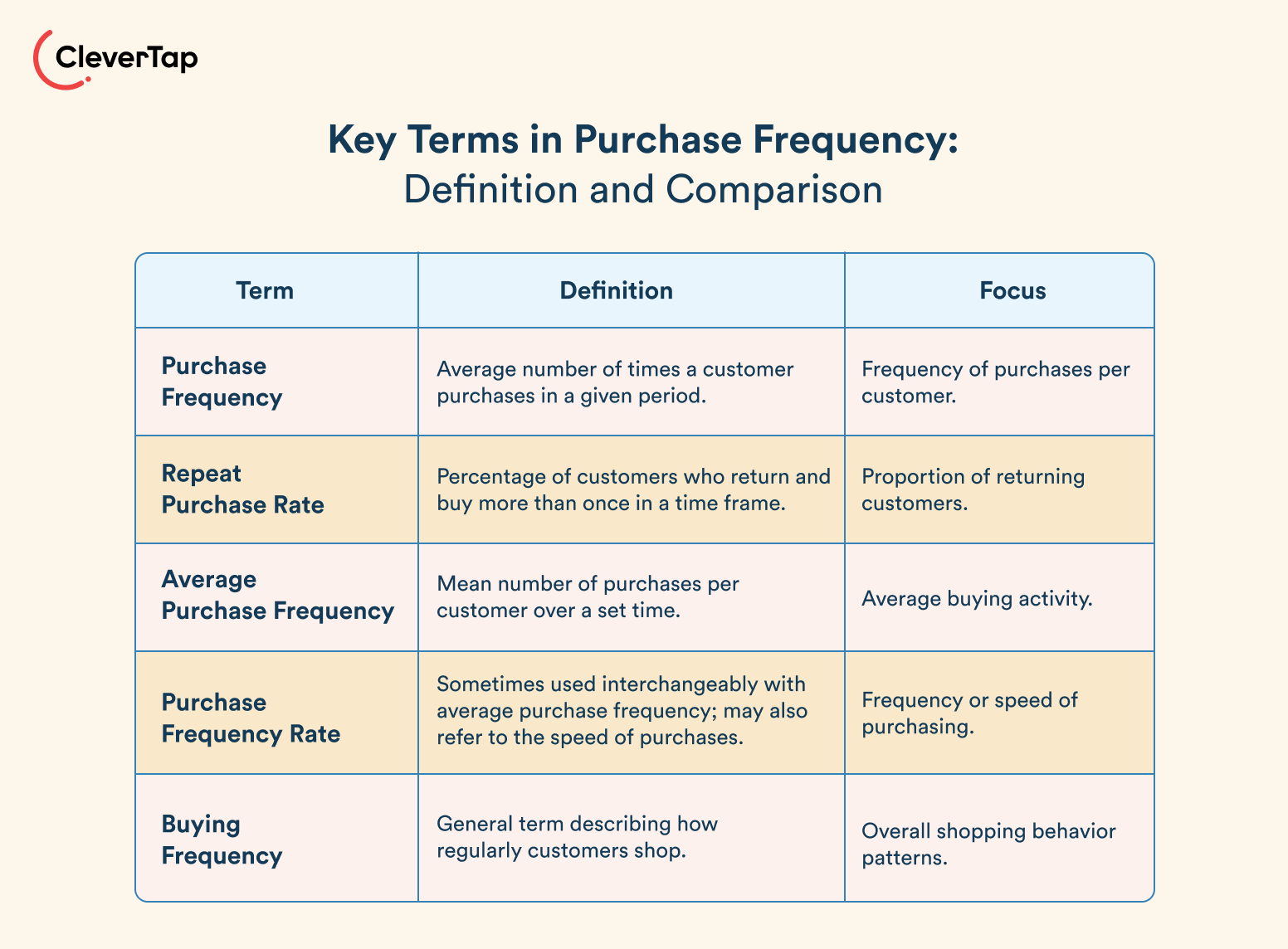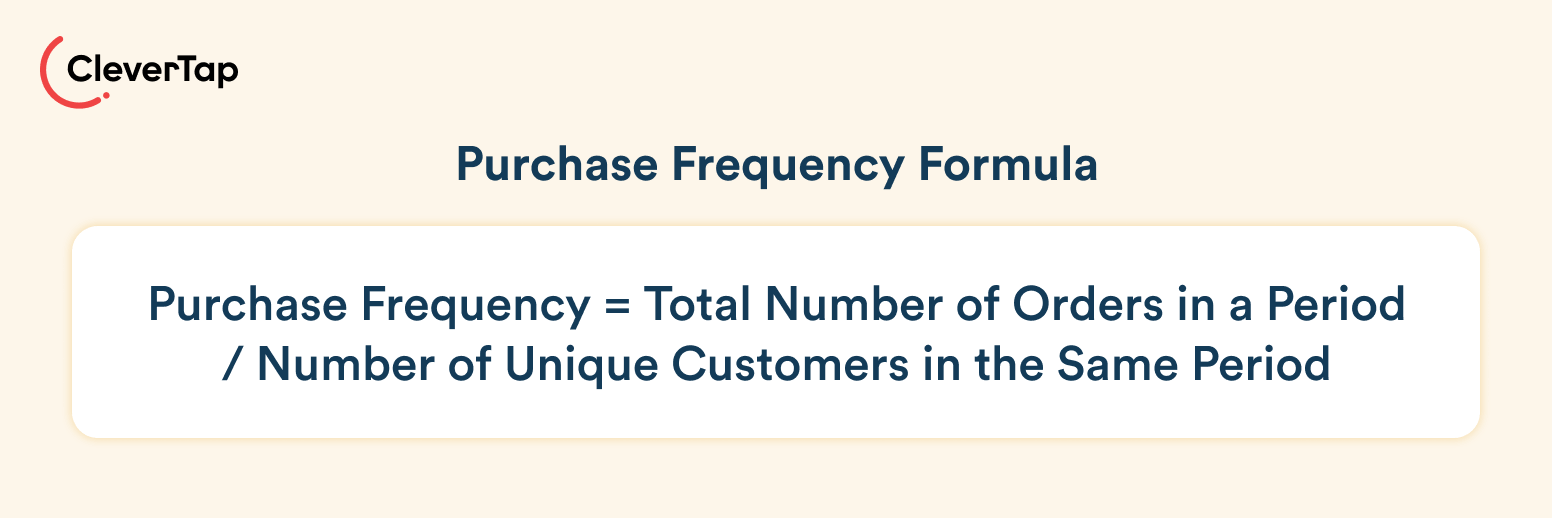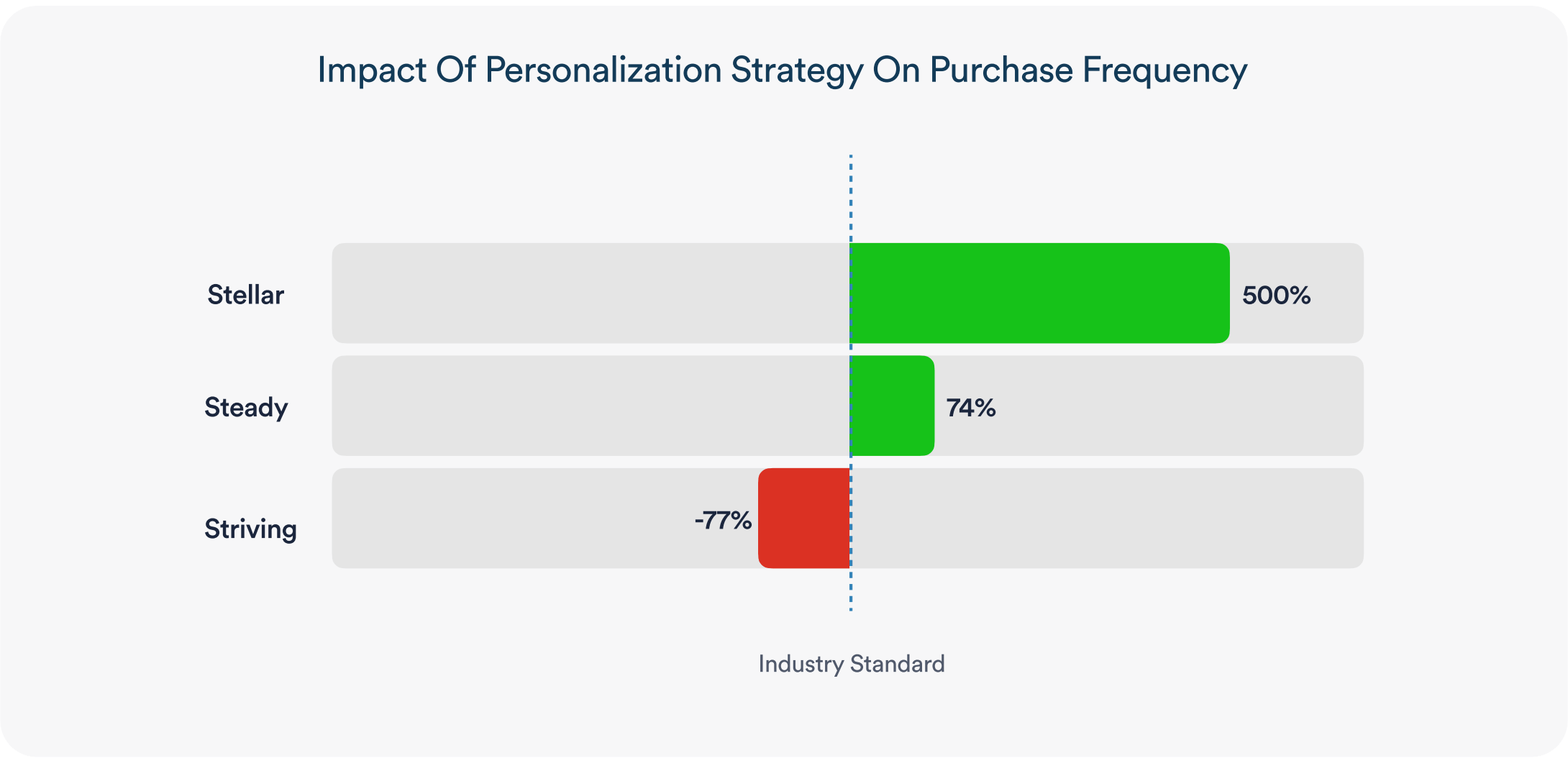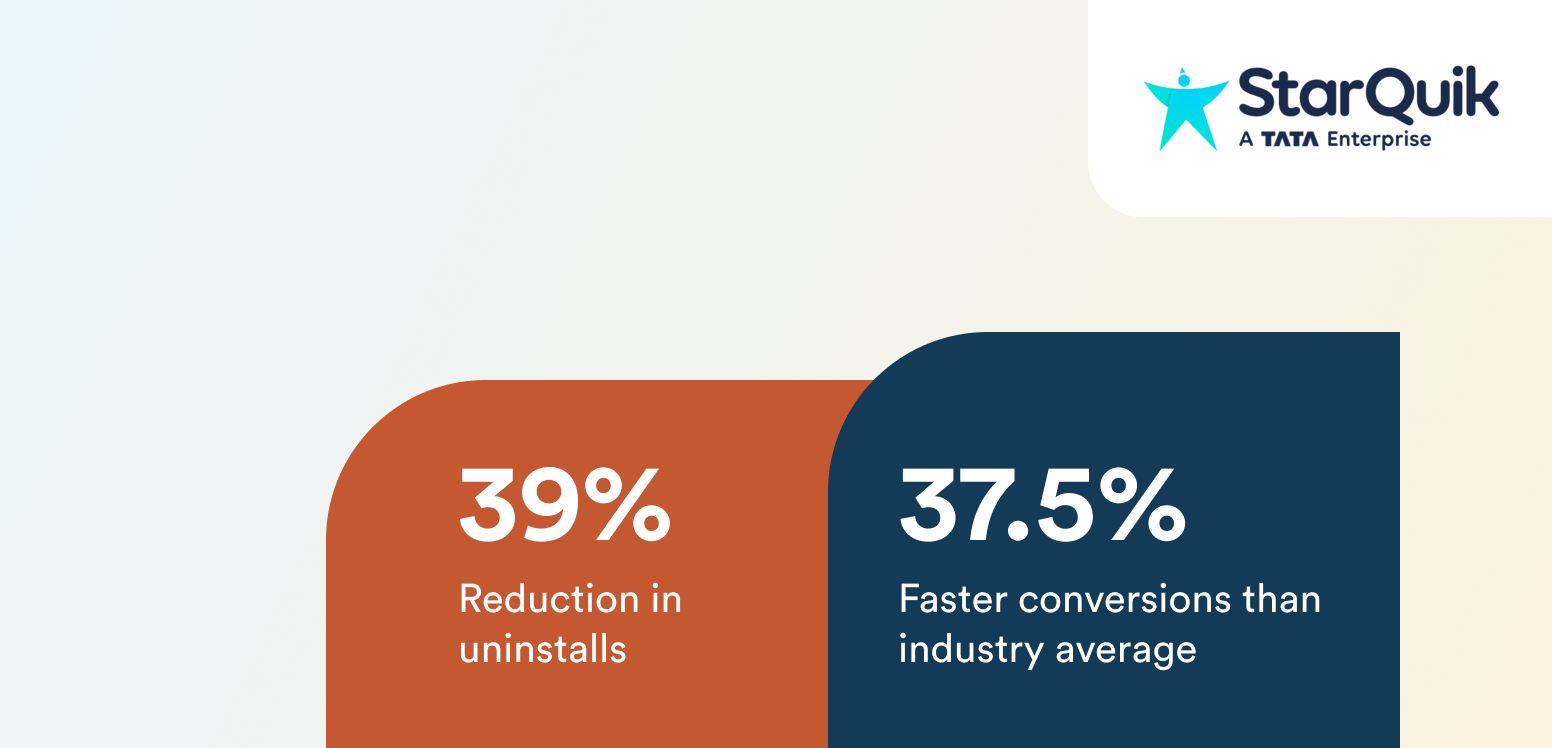Getting customers to buy once is good. Getting them to buy again and again? That’s where you can create real impact.
Purchase frequency is key to unlocking higher customer lifetime value and sustainable revenue growth. Purchase frequency measures how often customers return to make a purchase within a specific timeframe. Optimizing this metric can transform your marketing ROI.
In this strategic guide, we’ll break down what purchase frequency means in a marketing context, how to calculate it accurately, and why it matters. You’ll also find actionable strategies to increase purchase frequency and accelerate growth.
What is Purchase Frequency?
Purchase frequency, also known as order frequency, measures how often a customer buys from your business during a set period, like a week, month, or year. This metric reveals important patterns in your customers’ buying habits and shows how well you encourage repeat business. By tracking purchase frequency, you can spot loyal customers, improve retention, and fine-tune your marketing strategies to boost both engagement and revenue.
For marketers, understanding purchase frequency is more than just counting transactions. It’s about analyzing patterns in customer behavior, spotting your most loyal buyers, and finding opportunities to boost retention rate.
A higher purchase frequency often points to a healthy, engaged customer base, while a lower frequency can signal a need for better customer engagement or more compelling offers.
Difference Between Purchase Frequency and Repeat Purchase Rate
Although purchase frequency and repeat purchase rate might sound similar, they measure differently.
- Purchase frequency measures how often, on average, each customer purchases over a set period.
- Repeat purchase rate looks at the proportion of customers who return and buy from you more than once during that same time frame.
So, while purchase frequency measures how often people buy, the repeat purchase rate highlights the number of customers who return for more.

Average Purchase Frequency, Purchase Frequency Rate, and Buying Frequency
You’ll often hear terms like average purchase frequency, purchase frequency rate, and buying frequency used in marketing discussions.
- Average purchase frequency is the mean number of purchases per customer over a certain time.
- Purchase frequency rate is sometimes used interchangeably, though it can also refer to the speed at which purchases happen.
- Buying frequency is a broader concept that describes how regularly your customers shop with you, regardless of the calculation method.
Knowing these distinctions helps you set the right benchmarks and measure your progress accurately.
Why Purchase Frequency Matters in Marketing
When you keep customers engaged, whether through personalized offers, regular updates, or a smooth shopping experience, they’re far more likely to come back and buy again. This ongoing connection not only increases how often they shop with you but also deepens their loyalty and trust in your brand. Focusing on these relationships is usually more effective and affordable than always chasing new customers, and it sets the stage for long-term growth.
That’s why understanding and increasing purchase frequency is so important in marketing. Here’s what makes this metric valuable:
- Customer Retention: Frequent purchases show that customers are satisfied and loyal, making it easier and less costly to keep them coming back.
- Revenue Growth: When customers buy more often, they contribute more to your overall sales and boost their lifetime value.
- Customer Behavior Insights: Tracking purchase frequency helps you spot patterns in buying habits, so you can tailor your marketing and better meet customer needs.
Learn more about user retention and why it should matter to marketers.
How To Calculate Purchase Frequency
Purchase frequency calculation follows the below formula:
Purchase Frequency = Total Number of Orders / Number of Unique Customers

Working out your purchase frequency is straightforward and gives you a clear sense of how often your customers are choosing to buy from you.
Step-by-Step Method to Calculate Purchase Frequency:
- Set Your Timeframe: Pick the period you want to review, like a month, quarter, or year.
- Add Up Total Orders: Count all the orders placed during that time.
- Count Unique Customers: Find out how many different customers made those purchases.
- Calculate Purchase Frequency: Divide the total orders by the number of unique customers.
So, if your shop had 500 orders in a month and those came from 200 different customers, your purchase frequency would be 2.5. This means that, on average, each customer made two and a half purchases during that month.
You can use this formula for any time frame that makes sense for your business. Some marketers like to compare monthly and yearly purchase frequency to spot seasonal patterns or the impact of specific campaigns. You can also break down the numbers by customer segments or product lines to see where people are coming back most often.
Strategies To Increase Purchase Frequency
Encouraging customers to shop with you more often about a combination of of well thought strategies that make every interaction count. By focusing on genuine engagement, rewarding loyalty, and making the buying process smooth and relevant, you can naturally increase how often people return to your business.
1. Personalized Customer Engagement Tactics
Creating a personal connection with your customers goes a long way in building loyalty and driving sales. When you suggest products based on what someone has browsed or bought before, you’re showing genuine attention to their preferences.
This isn’t just good service, it’s effective: CleverTap’s report on e-commerce personalization found that brands using targeted, use-case-based personalization can see up to six times more purchases compared to the industry average.
Timing also matters. Sending personalized emails or push notifications, whether it’s a restock alert, a special discount, or a quick thanks, can encourage customers to come back.

The same CleverTap report shows that brands combining demographic and behavioral personalization can outperform industry benchmarks by as much as 500%. Even simple follow-ups after a purchase, like care tips or related product suggestions, help keep your brand top of mind and invite another visit.
Download the full report to understand how personalization impacts purchase frequency in e-commerce businesses.
2. Product and Content Optimization
Making it easy for customers to find what they need and showing them products that fit their tastes can encourage them to buy more often.
Suggesting items that go well with their previous purchases, or offering bundles and subscription options, can simplify decision-making and drive more frequent orders. When your content and product recommendations feel relevant, customers are more likely to return.
3. Loyalty and Retention Programs
People love to feel appreciated. Setting up a rewards program where customers earn points or perks for shopping again can turn a one-time buyer into a regular. Giving returning customers early access to sales, special discounts, or exclusive products adds an extra reason to return. These small gestures help build a sense of belonging and can turn occasional shoppers into loyal fans.
Ready to turn one-time buyers into loyal customers? Discover brilliant customer loyalty program examples and learn how to create rewards that keep shoppers coming back.
4. Marketing Automation
Using automation doesn’t mean losing the personal touch. You can use behavioral segmentation to tailor your marketing and deliver more relevant, personalized experiences. Testing different emails, offers, or timing helps you see what works best with your audience. When you use automation wisely, you can keep your outreach consistent and meaningful, making it easier for customers to say yes to coming back.
Challenges in Improving Purchase Frequency
Trying to get customers to buy more often isn’t always straightforward. Being aware of roadblocks can help you plan better and avoid wasting effort.
Common Pitfalls Marketers Face
Some of the most frequent mistakes include:
- Treating all customers the same: Not everyone shops with the same habits or needs, so generic tactics often fall flat.
- Relying too much on discounts and promotions: While these can drive short-term sales, they may train customers to only buy when there’s a deal, which can hurt profits and brand perception.
- Overlooking product quality and customer support: If the product doesn’t meet expectations or customer service is lacking, even the best marketing won’t bring people back.
- Ignoring customer feedback: Not listening to what customers are saying can lead to missed opportunities for improvement and repeat business.
The Problem With Relying On Averages
Looking only at the average purchase frequency can give you a false sense of security. For example, your numbers might look healthy, but that could be because a small group of loyal customers is making lots of purchases, while most others rarely come back.
This can hide the fact that you need to improve your approach for the majority of your audience. Averages can also blur the impact of seasonal changes or special campaigns, making it harder to pinpoint what’s really working.
When Lower Purchase Frequency Isn’t Necessarily Bad
It’s important to remember that not every business needs customers to buy frequently. If you sell products that are meant to last a long time, like furniture, electronics, or vehicles, it’s natural for people to buy less often.
In these cases, your focus should be on making each purchase count, offering great service, and encouraging referrals or add on sales, rather than pushing for more transactions that don’t fit your product’s natural buying cycle.
Industry-Specific Purchase Frequency Case Studies
Looking at how top brands in different industries encourage customers to buy more often can offer valuable insights. Here are some real-world examples that show how companies successfully drive repeat purchases and keep customers engaged:
How Tata StarQuik’s Purchase Frequency Tripled With CleverTap
Tata StarQuik, an online grocery platform, transformed its customer lifecycle strategy by adopting CleverTap’s automated segmentation tools, including RFM analysis and micro-segmentation. By carefully analyzing user behavior and grouping customers based on shopping habits, city, and product preferences, the team could deliver highly targeted campaigns across channels like SMS, email, and push notifications.
This approach allowed StarQuik to engage shoppers with relevant offers and reminders at the right moments, significantly increasing repeat purchases.
The results:

- 3X growth in app traffic, conversions, average bill value, and purchase frequency.
- A seamless and tailored customer experience that drove loyalty and sustained engagement.
- The ability to act on real-time behavioral trends to maximize campaign relevance and impact.
Read the full case study here.
How ASOS Increased Purchase Frequency With Its Premier Delivery Program
ASOS has found a smart way to get shoppers coming back more often. With its Premier Delivery subscription, customers pay a single annual fee and get unlimited next-day delivery. This removes the hassle of shipping costs and waiting times, making it easier for people to place orders whenever they want.
According to ASOS reports, those who sign up for Premier Delivery shop more than twice as frequently as regular customers. This approach boosts sales and builds long-term loyalty.
FabFitFun’s Customization Tactics Helped Increase Sales
FabFitFun stands out in the subscription box space by letting customers customize what they receive each quarter. This personal touch keeps subscribers interested and reduces the chance they’ll cancel.
The popularity of this approach is reflected in the growth of the U.S. beauty subscription box market, which was valued at $1.22 billion in 2024 and is expected to keep expanding rapidly in the years ahead.
How CleverTap Can Help Drive Purchase Frequency
Customers who feel connected to a brand tend to return and shop more often. Simple actions, like opening an app, browsing new arrivals, or responding to a special offer, can build habits that lead to repeat purchases.
The more a brand interacts with its customers in meaningful ways, the more likely those customers are to make another purchase. This is why businesses that focus on engagement, such as sending timely updates or offering tailored recommendations, often see higher purchase frequency.
Regular engagement does more than just keep your brand in front of people; it helps build trust and a sense of belonging. Customers who feel recognized and valued are not only more likely to buy again, but they’re also more likely to become loyal supporters who share their positive experiences with others.
CleverTap is a platform designed to help businesses turn occasional buyers into regular customers by making every interaction count. Here’s how it works:
- Brings Customer Data Together: CleverTap collects information from all the ways customers interact with your business, whether it’s through your app, website, or even in store visits. This gives you a complete picture of each customer’s journey.
- Smart Segmentation: You can group your customers based on their actions and preferences. This lets you send messages or offers that are actually relevant to each person, instead of using a one size fits all approach.
- Automated Messaging: CleverTap allows you to set up automatic messages, like reminders, updates, or special deals, that reach customers at the right time, through the right channel (push notification, email, SMS, etc.).
- Personalized Experiences: With all that data, you can make each customer feel like you understand what they want. Whether it’s a product suggestion or a birthday offer, these personal touches encourage people to come back.
- Real Time Insights: The platform shows you how your campaigns are performing and how often customers are coming back. This helps you see what’s working and where you can improve.
- Proactive Retention: CleverTap can even spot when a customer might be losing interest, so you can reach out before they disappear for good.
Let CleverTap help you improve customer engagement and boost purchase frequency.
Increased Purchase Frequency Is a Key Driver of Sustainable Business Growth
By focusing on meaningful customer engagement and using tools like CleverTap to deliver personalized, timely experiences, brands can encourage repeat buying and build lasting loyalty. Understanding your customers and staying connected with them makes all the difference in turning one-time shoppers into lifelong supporters.
Shivkumar M 
Head Product Launches, Adoption, & Evangelism.Expert in cross channel marketing strategies & platforms.
Free Customer Engagement Guides
Join our newsletter for actionable tips and proven strategies to grow your business and engage your customers.















































